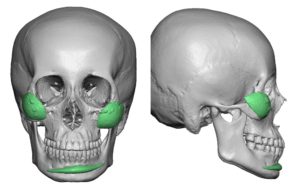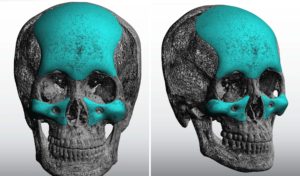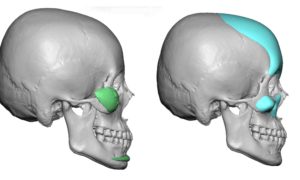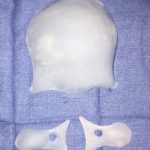Background: The shape of faces is influenced by the genetics of one’s ethnicity. This is well known and seen in the recognized major ethnicities around the world. In the Asian face, for example, the proclivity is for more width then projection in the entire craniofacial skeleton. This is evidenced in the tremendous popularity of the V-line jaw reshaping and cheekbone reduction procedures done throughout many of the Pacific Rim countries.
But increasing forehead projection and acquiring a more rounded shape can not be done by changing the bone itself. It requires augmentation of the bone through the application of various materials. While the use of bone cements can be effective the need for a long scalp incision to place them and the difficulty of getting such materials down low onto the tight brow tissues while it sets makes their use for me aesthetically limited today. Making a forehead implant using 3D design software allows for precise control of its shape and allows it to be inserted through an extremely small scalp incision.
While cheek width can be reduced by repositioning of the bone, adding anterior cheek and midface projection must be done by implant augmentation. Standard cheek implants are not made to achieve this type of midfacial effect and trying to use them to do so does not work. Only a custom midface implant that covers the entire surface of the anterior cheek, maxilla and infraorbital rim can provide the required augmentation effect in the desired location.
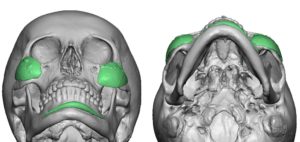

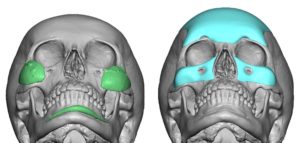
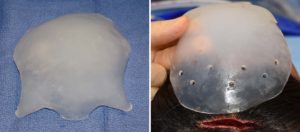
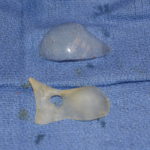
The combination of forehead and anterior cheek-midface augmentation in the Asian face helps add anterior facial projection which lessens overall facial width.
Case Highlights:
1) Many Asians faces lack forward projection particularly in the forehead and midface areas.
2) Combined forehead and cheek/midface augmentation helps bring the upper two-thirds of the face with that of the lower jaw.
3) Custom forehead and cheek-midface implants made from the patient’s 3D CT scan provides a precise method to control the shape and amount of forward facial projection.
Dr. Barry Eppley
Indianapolis, Indiana



